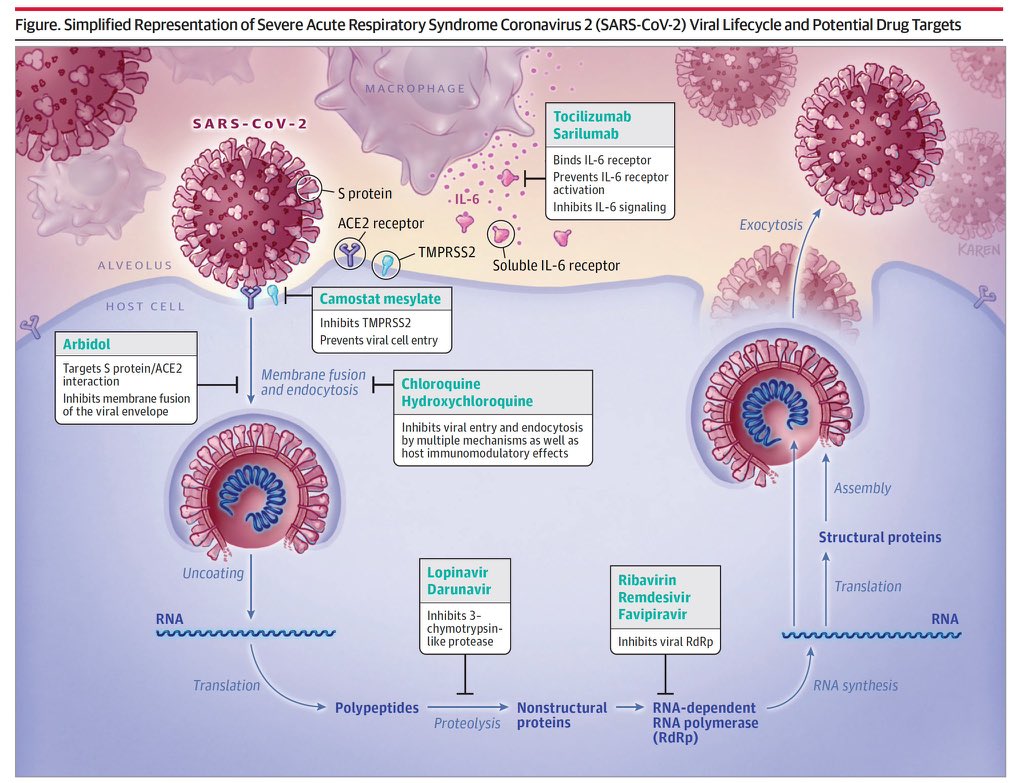Ever wonder how the medical illustrators at @JAMA_current create figures like these? There’s a thread for that! Here it is! https://twitter.com/jama_current/status/1249880050763259905">https://twitter.com/jama_curr...
Firstly, the process for this illustration was super sped up due to the importance of making info about COVID-19 treatments public as quickly as possible. And extra challenging as I’m now WFH and have 2 kids to homeschool and oh ya know, we’re in the middle of a global pandemic?!
Step 1: Research and then more research and oh my god so much research. In this case I was mostly researching life cycles of viruses closely related to SARS-CoV-2, because, well, I think no one’s really drawn this exact thing before.
Also did some research on the virus’s structure, but that’s already been well-documented. And most importantly, the purpose of THIS figure is not the virus’s structure.
 https://abs.twimg.com/emoji/v2/... draggable="false" alt="🚨" title="Police cars revolving light" aria-label="Emoji: Police cars revolving light">Remember your story and purpose!
https://abs.twimg.com/emoji/v2/... draggable="false" alt="🚨" title="Police cars revolving light" aria-label="Emoji: Police cars revolving light">Remember your story and purpose!
Step 2: Nail your story. Here we’re documenting the viral life cycle as well as the points at which the possible treatments target the life cycle. That’s my purpose. The only thing that matters. If I get it wrong? The illustration is a failure no matter how beautiful it is.
Step 3: Layout. At JAMA I’m working in very small sizes. There’s a lot of info to fit in this space, I want to try to make sure the eye travels through the image in the correct order of the story and that I’m not including a ton of extraneous imagery.
That (and time) is why I chose to leave out the intricate details of RNA translation, proteolysis, RNA synthesis, etc. Not really integral to the story here.
Step 4: Draw and color! The fun part! I tend to put down arbitrary colors first and *then* tweak it to death. It’s so easy to adjust colors in Photoshop. That cell was probably 20 different colors over the 2 days I drew this out.
But the colors have purpose! To get technical, I’m mainly using an analogous color scheme here. The green text is complementary to the reddish virus to stand out.
The areas/structures of most importance have the most saturation value contrast, which is intentional and is another aid to guide the eye through the figure.
Step 5 and in between all these other steps: Communication. Constantly. Communicating with my boss, editors, authors, proofreaders, and other JAMA illustrators to get feedback on accuracy, story, wording, effectiveness, etc. I couldn’t do it without them.
Just never ending gratitude that I get to draw this stuff and contribute to science and that medical illustrators are so highly valued at JAMA.  https://abs.twimg.com/emoji/v2/... draggable="false" alt="❤️" title="Red heart" aria-label="Emoji: Red heart">
https://abs.twimg.com/emoji/v2/... draggable="false" alt="❤️" title="Red heart" aria-label="Emoji: Red heart">

 Read on Twitter
Read on Twitter


